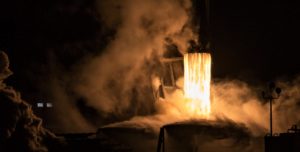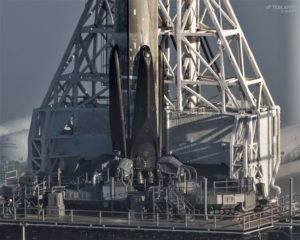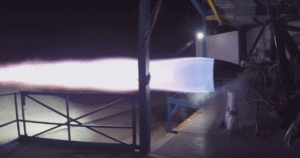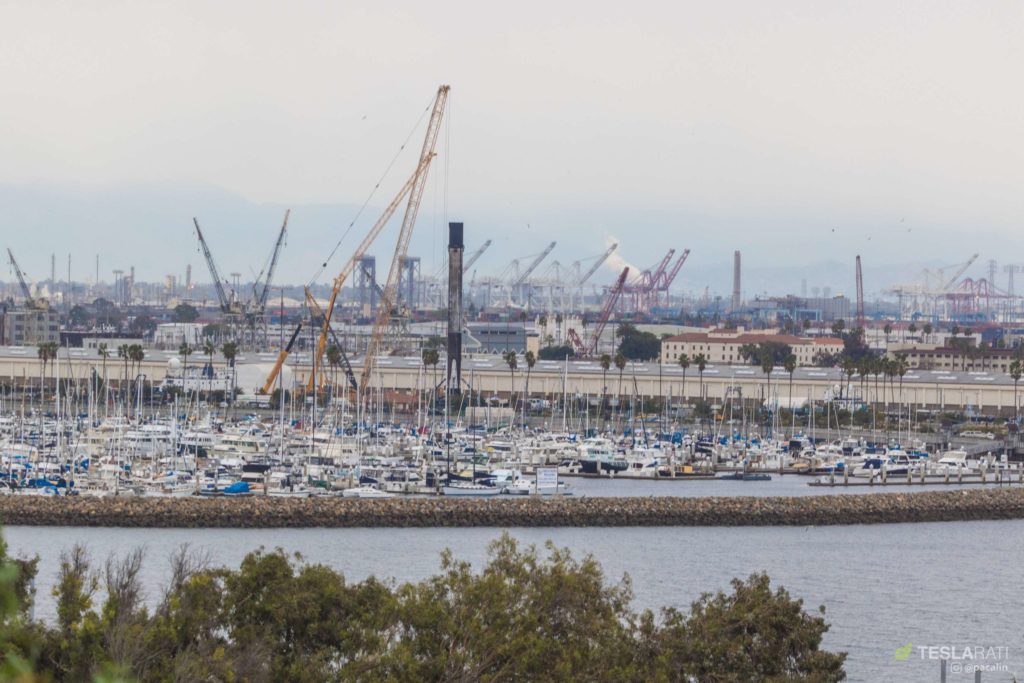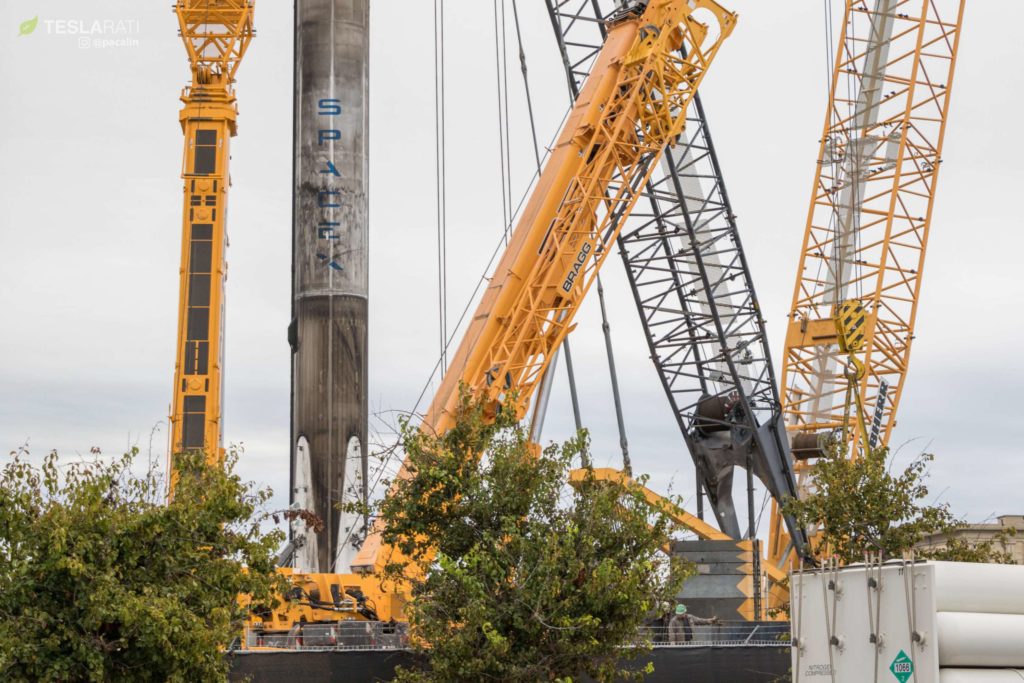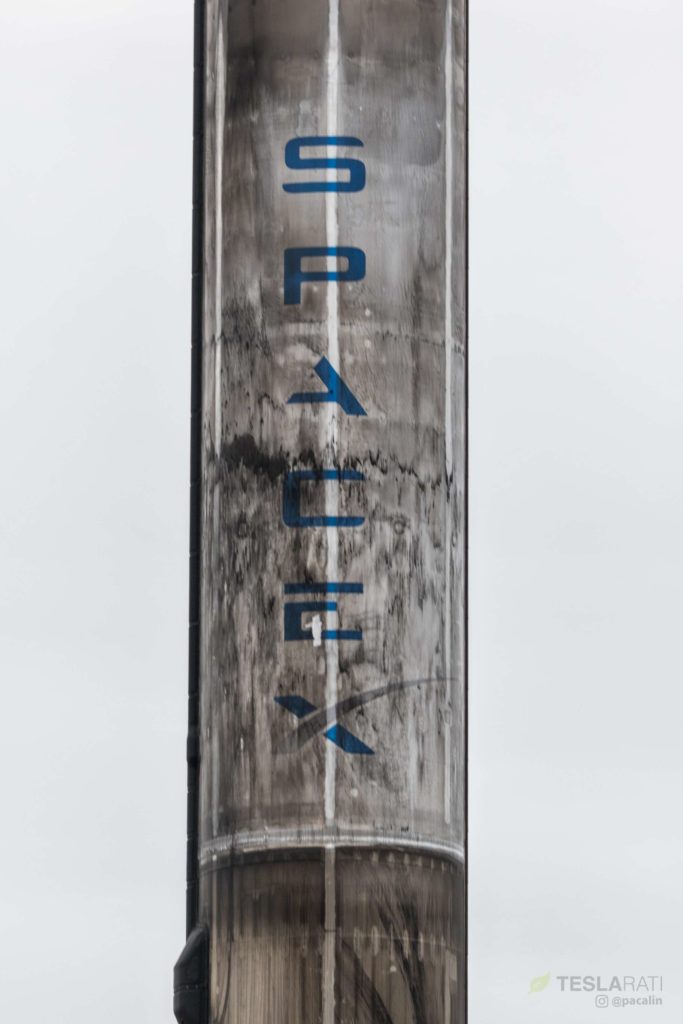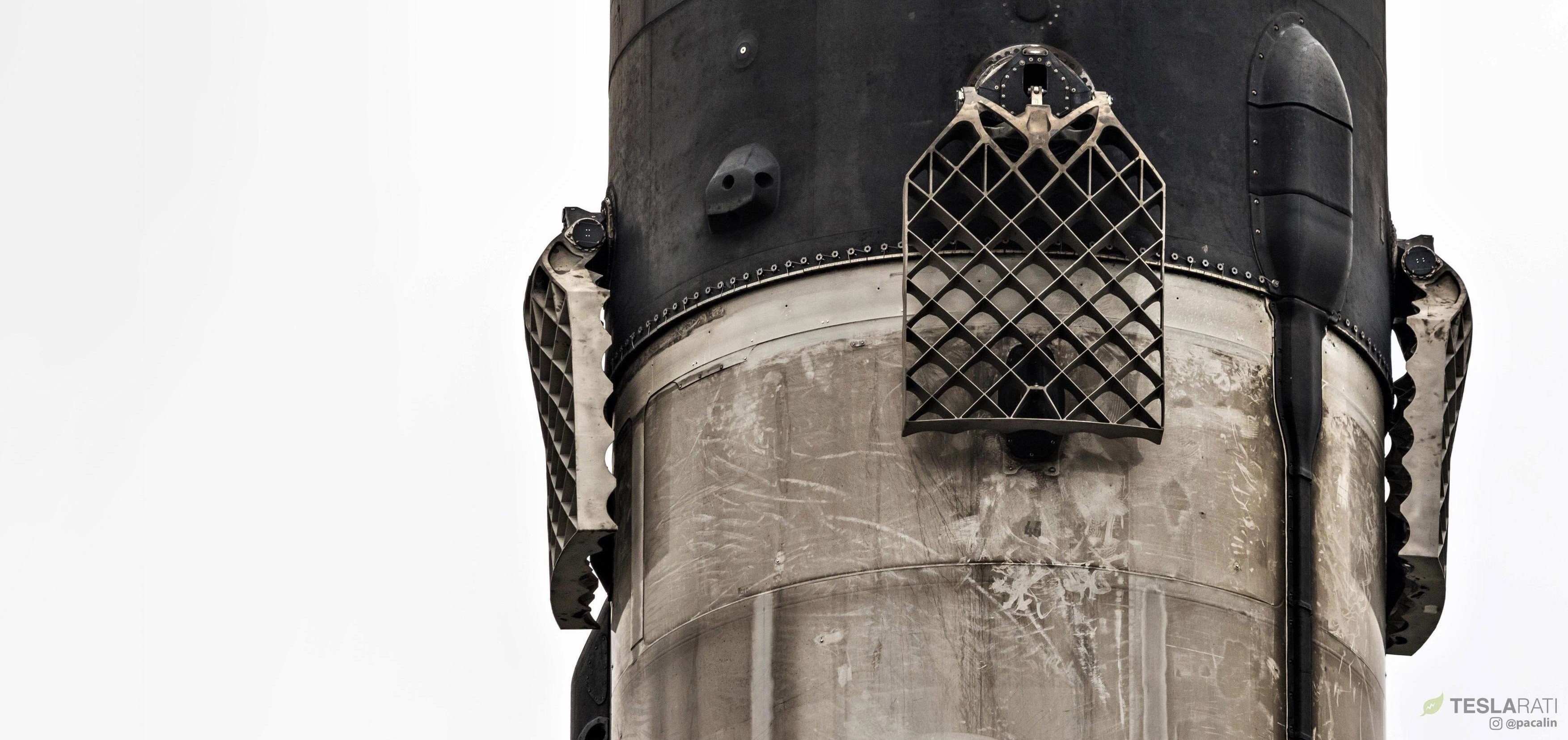

News
SpaceX Falcon 9 booster sails into port after historic third launch and landing
Although a sister rocket did not fare nearly as well during a separate landing attempt 48 hours later, SpaceX Falcon 9 Block 5 booster B1046 nailed its third successful launch and landing on December 3rd and arrived in Port of Los Angeles a bit less than 48 hours later.
Greeting the rocket after its milestone third reuse was a rare Los Angeles rainstorm, lending a lovely reflective sheen to all uncovered surfaces as low clouds and an obscured sun bathed everything in a stark and uniform off-white light.
That’s one scorched booster, still standing on JRTI at the moment, in the rain. B1046.3 arrived back at port earlier this morning after launching and landing for the 3rd time during the SSO-A mission. What. A. Sight. #spacex pic.twitter.com/EhHY9HK9cD
— Pauline Acalin (@w00ki33) December 5, 2018
It is difficult to conceive of a set of conditions that might serve to better emphasize the well-worn patina of soot and charring now fully covering the once-shiny white exterior of B1046’s fuel and oxidizer tanks, a sort of literal badge of honor for the three orbital-class launches the booster has now supported in the last six months. Functionally speaking, cleaning a Falcon 9 booster from top to bottom would be an unbelievably tedious, time-consuming, and largely pointless task, requiring careful spot-cleaning of something like 400 square meters (4300 square feet).

While SpaceX did repaint recovered Falcon 9 boosters a handful of times around the start of commercial reflights, it always served more of an aesthetic purpose over anything seriously utilitarian. Furthermore, aerospace-grade paint like that used by SpaceX is quite heavy potentially weighing several hundred kilograms per booster and requiring a week at minimum to fully apply a new coat. Some followers like to point out the lost benefits of Falcon 9’s reflective white paint, serving as a mild thermal insulator for Falcon 9’s tanks when filled with supercool propellant. While it certainly exists, the additional heating induced by soot coatings is completely negligible for Falcon 9, which is constantly topped off with chilled propellant prior to launch.
As such, sooty boosters will be around as long as the kerolox-power Falcon family remains in operation. Not too long from now, shiny new Falcon rockets will likely be as rare as the expendable rocket launches they partially represent – the launch vehicles of the future will be rugged workhorses more comparable to the 737s that fill the ranks of airliner fleets than to single-use works of art. Nevertheless, soot is by no means an innate feature of rockets, reusable or otherwise, instead deriving from Falcon 9’s pragmatic choice of kerosene as fuel – soot is simply an inevitable byproduct of kerosene combustion.
- Falcon 9 B1049 lifts off for the first time at SpaceX’s LC-40 pad in September 2018. (Teslarati)
- B1048 bares its sooty skin the morning before launch. (Pauline Acalin)
- A gif of Raptor throttling over the course of a 90+ second static-fire test in McGregor, Texas. (SpaceX)
- SpaceX’s subscale Raptor engine has completed more than 1200 seconds of testing in less than two years. (SpaceX)
A long and sooty future
Whenever it begins flying, the sole byproducts of the combustion of BFR/Starlink/Super Heavy’s methane-oxygen (methalox) propellant are water vapor and carbon dioxide, although true methane supplies will inevitably have slight impurities and thus cause the negligible production of some less pleasant byproducts. Raptor, the methalox rocket engine that will power BFR, has been performing hot-fire tests for more than two years, and the sheer differences between the exhaust of Merlin and Raptor are a striking example of the different chemistries at work. As a result of much cleaner combustion, BFR may produce no soot byproducts whatsoever – enjoy it while it lasts!
In the meantime, Falcon 9 will continue to fly and refly for the foreseeable future. B1046’s third successful launch and recovery is a huge step in that direction and the very fact that the most noticeable difference is a new coating of soot at least partially hints at the efficacy of Block 5’s reusability-minded upgrades. Even when twice-flown Block 5 octaweb heat shields are glimpsed, it’s all but impossible to tell the difference between an unflown or twice-flown example, while the new jet-black thermal protection on Block 5 interstages and octawebs only exhibit subtle scarring after reentry heating.
It almost goes without saying that the real killer in multi-use aerospace products – fatigue – is rarely visible to the naked eye, so the external appearance of Falcon boosters is more of a swoon-worthy placebo than anything else. Still, Falcon 9 Block 5 continues to demonstrate that its external appearance is almost equally indicative of truly robust reusability engineering.
- B1046. (Pauline Acalin)
- . . . (Pauline Acalin)
- ENHANCE! (Pauline Acalin)
For prompt updates, on-the-ground perspectives, and unique glimpses of SpaceX’s rocket recovery fleet check out our brand new LaunchPad and LandingZone newsletters!
News
Tesla launches in India with Model Y, showing pricing will be biggest challenge
Tesla finally got its Model Y launched in India, but it will surely come at a price for consumers.

Tesla has officially launched in India following years of delays, as it brought its Model Y to the market for the first time on Tuesday.
However, the launch showed that pricing is going to be its biggest challenge. The all-electric Model Y is priced significantly higher than in other major markets in which Tesla operates.
On Tuesday, Tesla’s Model Y went up for sale for 59,89,000 rupees for the Rear-Wheel Drive configuration, while the Long Range Rear-Wheel Drive was priced at 67,89,000.
This equates to $69,686 for the RWD and $78,994 for the Long Range RWD, a substantial markup compared to what these cars sell for in the United States.
🚨 Here’s the difference in price for the Tesla Model Y in the U.S. compared to India.
🚨 59,89,000 is $69,686
🚨 67,89,000 is $78,994 pic.twitter.com/7EUzyWLcED— TESLARATI (@Teslarati) July 15, 2025
Deliveries are currently scheduled for the third quarter, and it will be interesting to see how many units they can sell in the market at this price point.
The price includes tariffs and additional fees that are applied by the Indian government, which has aimed to work with foreign automakers to come to terms on lower duties that increase vehicle cost.
Tesla Model Y seen testing under wraps in India ahead of launch
There is a chance that these duties will be removed, which would create a more stable and affordable pricing model for Tesla in the future. President Trump and Indian Prime Minister Narendra Modi continue to iron out those details.
Maharashtra Chief Minister Devendra Fadnavis said to reporters outside the company’s new outlet in the region (via Reuters):
“In the future, we wish to see R&D and manufacturing done in India, and I am sure at an appropriate stage, Tesla will think about it.”
It appears to be eerily similar to the same “game of chicken” Tesla played with Indian government officials for the past few years. Tesla has always wanted to enter India, but was unable to do so due to these import duties.
India wanted Tesla to commit to building a Gigafactory in the country, but Tesla wanted to test demand first.
It seems this could be that demand test, and the duties are going to have a significant impact on what demand will actually be.
Elon Musk
Tesla ups Robotaxi fare price to another comical figure with service area expansion
Tesla upped its fare price for a Robotaxi ride from $4.20 to, you guessed it, $6.90.

Tesla has upped its fare price for the Robotaxi platform in Austin for the first time since its launch on June 22. The increase came on the same day that Tesla expanded its Service Area for the Robotaxi ride-hailing service, offering rides to a broader portion of the city.
The price is up from $4.20, a figure that many Tesla fans will find amusing, considering CEO Elon Musk has used that number, as well as ’69,’ as a light-hearted attempt at comedy over the past several years.
Musk confirmed yesterday that Tesla would up the price per ride from that $4.20 point to $6.90. Are we really surprised that is what the company decided on, as the expansion of the Service Area also took effect on Monday?
But the price is now a princely $6.90, as foretold in the prophecy 😂
— Elon Musk (@elonmusk) July 14, 2025
The Service Area expansion was also somewhat of a joke too, especially considering the shape of the new region where the driverless service can travel.
I wrote yesterday about how it might be funny, but in reality, it is more of a message to competitors that Tesla can expand in Austin wherever it wants at any time.
Tesla’s Robotaxi expansion wasn’t a joke, it was a warning to competitors
It was only a matter of time before the Robotaxi platform would subject riders to a higher, flat fee for a ride. This is primarily due to two reasons: the size of the access program is increasing, and, more importantly, the service area is expanding in size.
Tesla has already surpassed Waymo in Austin in terms of its service area, which is roughly five square miles larger. Waymo launched driverless rides to the public back in March, while Tesla’s just became available to a small group in June. Tesla has already expanded it, allowing new members to hail a ride from a driverless Model Y nearly every day.
The Robotaxi app is also becoming more robust as Tesla is adding new features with updates. It has already been updated on two occasions, with the most recent improvements being rolled out yesterday.
Tesla updates Robotaxi app with several big changes, including wider service area
News
Tesla Model Y and Model 3 dominate U.S. EV sales despite headwinds
Tesla’s two mainstream vehicles accounted for more than 40% of all EVs sold in the United States in Q2 2025.

Tesla’s Model Y and Model 3 remained the top-selling electric vehicles in the U.S. during Q2 2025, even as the broader EV market dipped 6.3% year-over-year.
The Model Y logged 86,120 units sold, followed by the Model 3 at 48,803. This means that Tesla’s two mainstream vehicles accounted for 43% of all EVs sold in the United States during the second quarter, as per data from Cox Automotive.
Tesla leads amid tax credit uncertainty and a tough first half
Tesla’s performance in Q2 is notable given a series of hurdles earlier in the year. The company temporarily paused Model Y deliveries in Q1 as it transitioned to the production of the new Model Y, and its retail presence was hit by protests and vandalism tied to political backlash against CEO Elon Musk. The fallout carried into Q2, yet Tesla’s two mass-market vehicles still outsold the next eight EVs combined.
Q2 marked just the third-ever YoY decline in quarterly EV sales, totaling 310,839 units. Electric vehicle sales, however, were still up 4.9% from Q1 and reached a record 607,089 units in the first half of 2025. Analysts also expect a surge in Q3 as buyers rush to qualify for federal EV tax credits before they expire on October 1, Cox Automotive noted in a post.
Legacy rivals gain ground, but Tesla holds its commanding lead
General Motors more than doubled its EV volume in the first half of 2025, selling over 78,000 units and boosting its EV market share to 12.9%. Chevrolet became the second-best-selling EV brand, pushing GM past Ford and Hyundai. Tesla, however, still retained a commanding 44.7% electric vehicle market share despite a 12% drop in in Q2 revenue, following a decline of almost 9% in Q1.
Incentives reached record highs in Q2, averaging 14.8% of transaction prices, roughly $8,500 per vehicle. As government support winds down, the used EV market is also gaining momentum, with over 100,000 used EVs sold in Q2.
Q2 2025 Kelley Blue Book EV Sales Report by Simon Alvarez on Scribd
-

 News3 days ago
News3 days agoTesla debuts hands-free Grok AI with update 2025.26: What you need to know
-

 Elon Musk1 week ago
Elon Musk1 week agoElon Musk confirms Grok 4 launch on July 9 with livestream event
-

 Elon Musk5 days ago
Elon Musk5 days agoxAI launches Grok 4 with new $300/month SuperGrok Heavy subscription
-

 News2 weeks ago
News2 weeks agoTesla Model 3 ranks as the safest new car in Europe for 2025, per Euro NCAP tests
-

 Elon Musk2 weeks ago
Elon Musk2 weeks agoxAI’s Memphis data center receives air permit despite community criticism
-

 News5 days ago
News5 days agoTesla begins Robotaxi certification push in Arizona: report
-

 Elon Musk2 weeks ago
Elon Musk2 weeks agoTesla reveals it is using AI to make factories more sustainable: here’s how
-

 Elon Musk2 weeks ago
Elon Musk2 weeks agoTesla scrambles after Musk sidekick exit, CEO takes over sales

